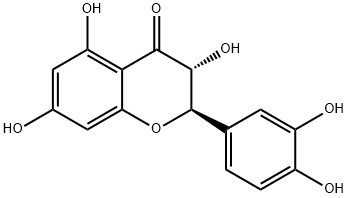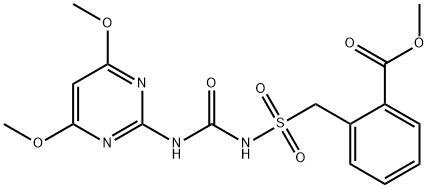Dihydrocapsaicin
Synonym(s):N-[(4-Hydroxy-3-methoxyphenyl)methyl]-8-methylnonenamide;6,7-Dihydrocapsaicin;8-Methyl-N-vanillylnonanamide;Dihydrocapsaicin
- CAS NO.:19408-84-5
- Empirical Formula: C18H29NO3
- Molecular Weight: 307.43
- MDL number: MFCD00057794
- EINECS: 606-308-7
- SAFETY DATA SHEET (SDS)
- Update Date: 2025-01-27 09:38:02

What is Dihydrocapsaicin?
Description
Dihydrocapsaicin is a terpene alkaloid that has been found in Capsicum and has diverse biological activities. It is active against E. faecalis, B. subtilis, S. aureus, P. aeruginosa, K. pneumoniae, E. coli, and C. albicans (MICs = 0.6-10 μg/ml). Dihydrocapsaicin scavenges DPPH and ABTS radicals in cell-free assays. It increases LC3-II, a marker of autophagy, and catalase levels and reduces reactive oxygen species (ROS) production in normal WI38 lung fibroblasts and H1299, but not A549 or H460, lung cancer cells when used at a concentration of 200 μM. Dihydrocapsaicin is an agonist of transient receptor potential vanilloid 1 (TRPV1) and inhibits NETosis induced by phorbol 12-myristate 13-acetate (TPA; ) in isolated human neutrophils. It induces cortical and systemic hypothermia and reduces infarct volume in a rat model of ischemia-reperfusion injury induced by middle cerebral artery occlusion (MCAO) when administered at a dose of 0.5 mg/kg, i.p.
Chemical properties
White Solid
The Uses of Dihydrocapsaicin
Dihydrocapsaicin has been used as a reference standard for the identification of dihydrocapsaicin in blood and tissue samples by high performance liquid chromatography (HPLC) combined with tandem mass spectrometry (MS) and in tomato-based salsas by enzyme immunoassay (EIA) and LC with fluorescent detection.
It may be used as a reference standard for the determination of dihydrocapsaicin in Capsicum fruit samples by HPLC equipped with a Surveyor photodiode array (PDA) detector and in rat plasma by HPLC-triple quadrupole MS with electrospray ionization (ESI) in selected reaction monitoring (SRM) mode.
The Uses of Dihydrocapsaicin
Capsaicin (C175680) analog. A VR1 vaniloid receptor agonist.
What are the applications of Application
Dihydrocapsaicin is antioxidants and free radical scavengers
Definition
ChEBI: Dihydrocapsaicin is a capsaicinoid.
General Description
Dihydrocapsaicin belongs to the capsaicinoid group of compounds which are responsible for the pungency of capsicum fruits.
Biochem/physiol Actions
VR1 vanilloid receptor agonist.
Properties of Dihydrocapsaicin
| Melting point: | 62-65 °C(lit.) |
| Boiling point: | 497.4±35.0 °C(Predicted) |
| Density | 1.026±0.06 g/cm3(Predicted) |
| storage temp. | Sealed in dry,2-8°C |
| solubility | H2O: insoluble |
| form | White to off-white solid. |
| pka | 9.76±0.20(Predicted) |
| color | White to off-white |
| BRN | 2815150 |
| CAS DataBase Reference | 19408-84-5(CAS DataBase Reference) |
| EPA Substance Registry System | Dihydrocapsaicin (19408-84-5) |
Safety information for Dihydrocapsaicin
| Signal word | Danger |
| Pictogram(s) |
 Skull and Crossbones Acute Toxicity GHS06 |
| GHS Hazard Statements |
H301:Acute toxicity,oral H315:Skin corrosion/irritation H319:Serious eye damage/eye irritation H335:Specific target organ toxicity, single exposure;Respiratory tract irritation |
| Precautionary Statement Codes |
P261:Avoid breathing dust/fume/gas/mist/vapours/spray. P301+P310:IF SWALLOWED: Immediately call a POISON CENTER or doctor/physician. P305+P351+P338:IF IN EYES: Rinse cautiously with water for several minutes. Remove contact lenses, if present and easy to do. Continuerinsing. |
Computed Descriptors for Dihydrocapsaicin
| InChIKey | XJQPQKLURWNAAH-UHFFFAOYSA-N |
Related products of tetrahydrofuran








You may like
-
 Dihydrocapsaicin, ≥98% CAS 19408-84-5View Details
Dihydrocapsaicin, ≥98% CAS 19408-84-5View Details
19408-84-5 -
 Dihydrocapsaicin CASView Details
Dihydrocapsaicin CASView Details -
 Dihydrocapsaicin CAS 19408-84-5View Details
Dihydrocapsaicin CAS 19408-84-5View Details
19408-84-5 -
 Dihydrocapsaicin CAS 19408-84-5View Details
Dihydrocapsaicin CAS 19408-84-5View Details
19408-84-5 -
 37951-47-6 3'-Benzyloxy propiophenone, 98% 99%View Details
37951-47-6 3'-Benzyloxy propiophenone, 98% 99%View Details
37951-47-6 -
 104944-18-5 99%View Details
104944-18-5 99%View Details
104944-18-5 -
 3'-Methoxypropiophenone, 99% 37951-49-8 99%View Details
3'-Methoxypropiophenone, 99% 37951-49-8 99%View Details
37951-49-8 -
 51364-51-3 99%View Details
51364-51-3 99%View Details
51364-51-3